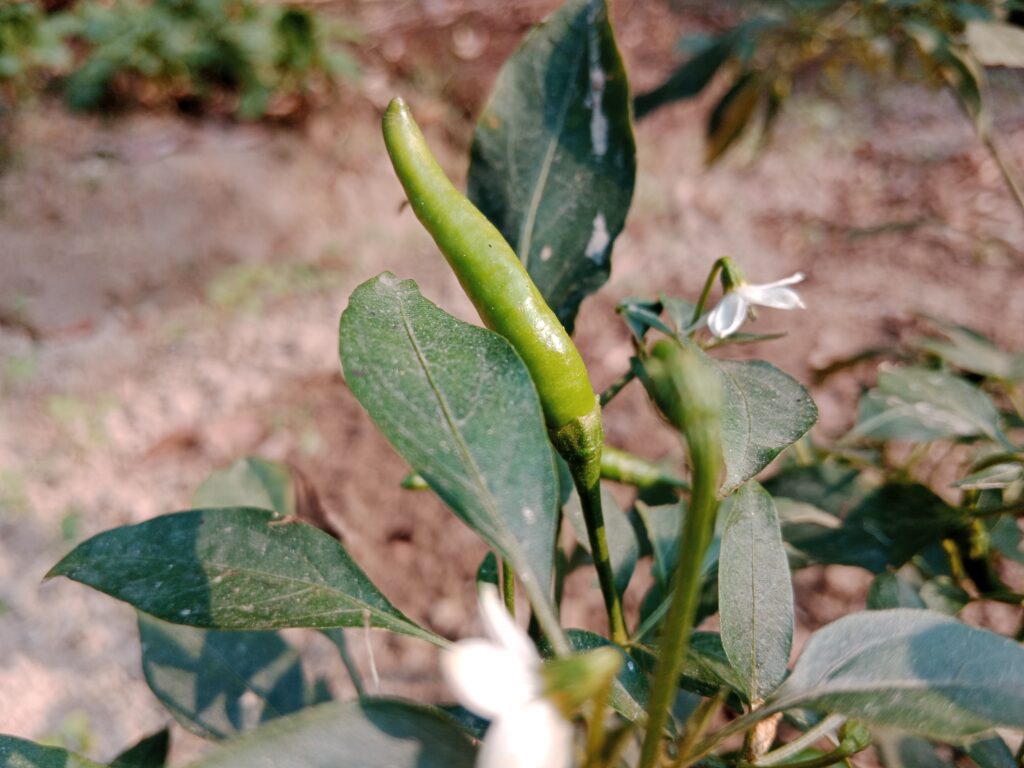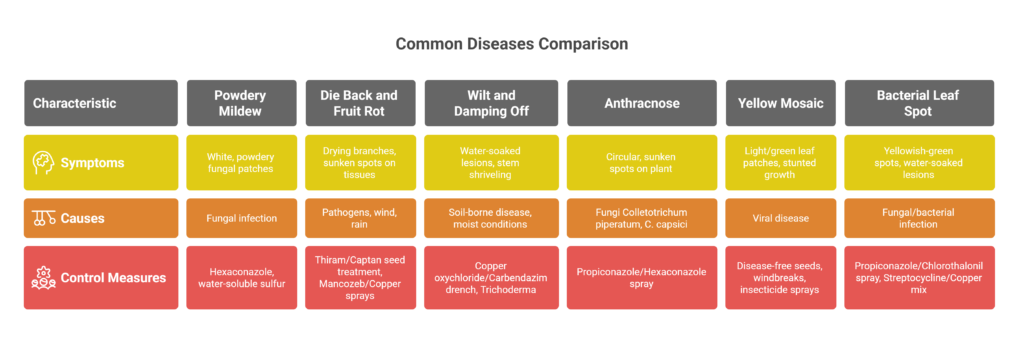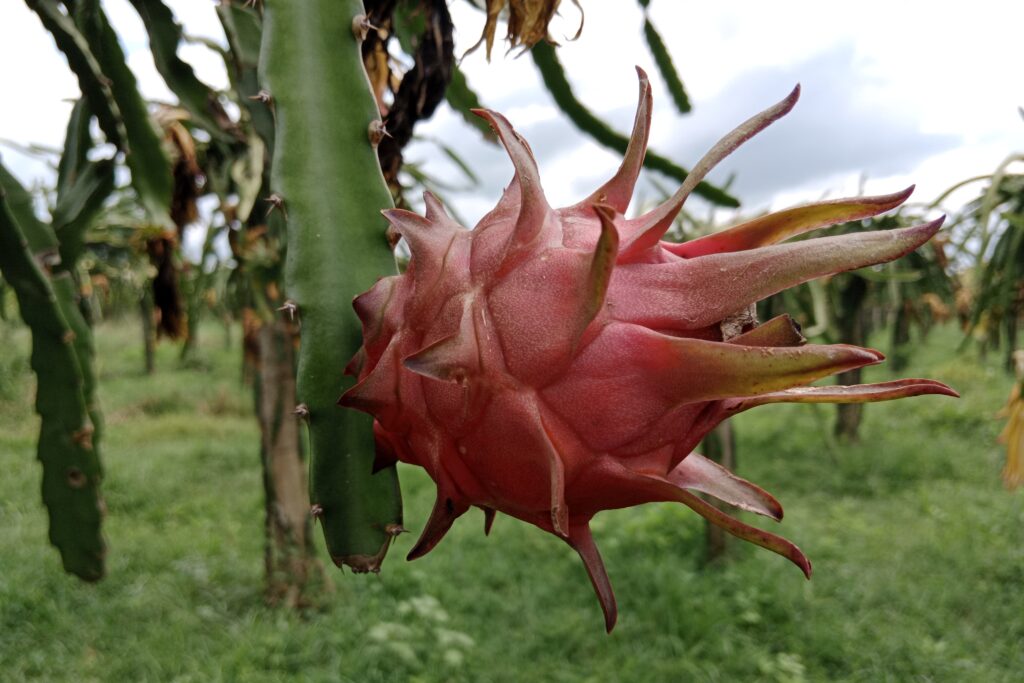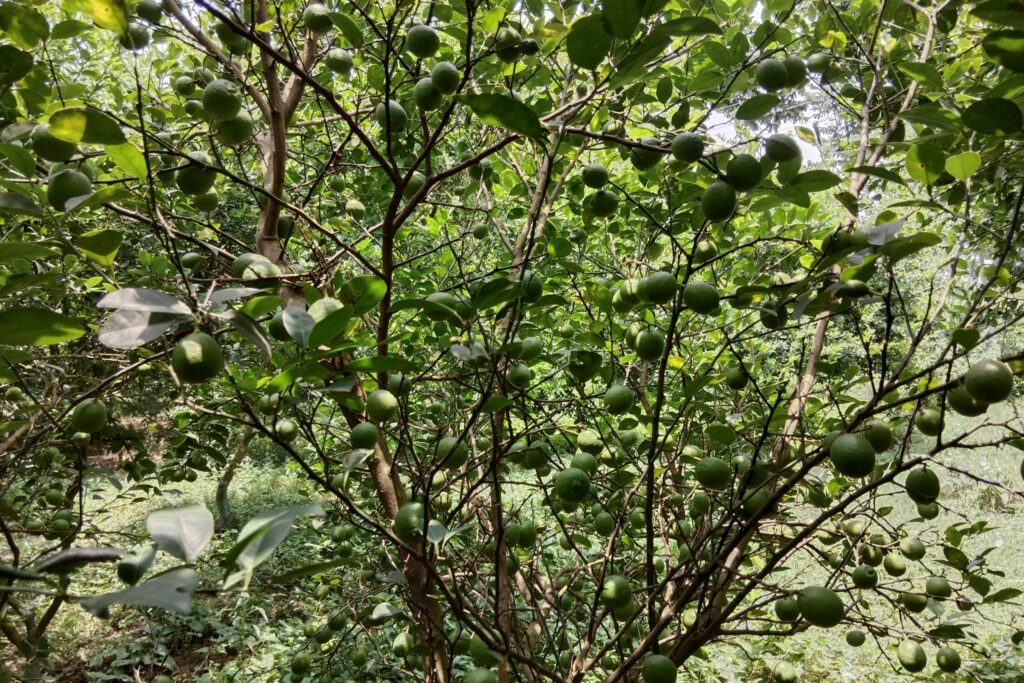Chilli Farming
Chilli farming profit per acre varies significantly between green and dried chilli cultivation, offering farmers distinct opportunities based on their resources and market access. Green chilli farming provides a total income of NRs. 150,000 per acre with an investment of NRs. 41,000, covering essential expenses like land preparation, seeds, labor, fertilizers, irrigation, and pest control. This results in a net profit of NRs. 109,000 and a profit-to-cost ratio of approximately 2.66, demonstrating a profitable return for every rupee invested.

In contrast, dried chilli farming generates a higher total income of NRs. 225,000 per acre with the same investment cost of NRs. 41,000, yielding a net profit of NRs. 184,000 and an impressive profit-to-cost ratio of 4.49. This significant difference highlights dried chilli farming as a more lucrative option, provided that factors such as market demand, yield quality, and cost efficiency are effectively managed.
Land Preparation
Land preparation is a fundamental step in agriculture, starting with plowing the soil to a depth of 20–30 cm to improve aeration, soil structure, and root penetration. Incorporate 10–15 tonnes of well-decomposed farmyard manure (FYM) per acre during plowing to enhance organic content and nutrient availability, followed by thorough leveling to eliminate undulations, prevent water stagnation, and ensure uniform irrigation.
Next, form ridges and furrows are spaced 60 cm apart to optimize drainage and root aeration. Enrich the soil with biofertilizers by mixing 1 kg/acre each of Azospirillum and Phosphobacteria with 20 kg of FYM, evenly distributing this mixture across the field to activate beneficial microbes. After preparing the ridges, irrigate the furrows adequately to maintain optimal soil moisture.
Transplant 40–45-day-old seedlings onto the ridges, carefully preserving the root ball to minimize transplant shock and promote quick acclimatization. This integrated process combines organic amendments, microbial inoculation, and precise field preparation to foster robust seedling growth, efficient resource utilization, and sustainable crop productivity.
Soil Type
Sandy loam/loam soils with good drainage and pH 6.0–7.0 boost root health and nutrient uptake. Avoid heavy clay soil to prevent waterlogging and root rot. Regular soil tests guide adjustments (e.g., lime for acidity, organic matter for nutrients), ensuring fertile, balanced soil for robust plant growth and productivity.
Climatic Requirements
Plants thrive in warm, frost-free climates with daytime temperatures ideally maintained between 20–30°C, as exposure to frost or prolonged cold can severely damage growth and productivity. Adequate annual rainfall of 600–1,250 mm is generally sufficient, though supplemental irrigation may be necessary during dry periods to sustain consistent moisture levels; however, excessive humidity should be avoided to mitigate risks of fungal and bacterial diseases, which thrive in overly damp conditions. Balancing these climatic factors—stable warmth, regulated water supply, and controlled humidity—creates an environment conducive to healthy plant development while minimizing stress and susceptibility to pathogens.
Major Cultivars
Numerous types of chilies are cultivated to meet regional, culinary, and agricultural needs. Grown mostly in Karnataka, India, Byadagi is a popular commercial variety that is valued for its deep red color and gentle heat, which makes it perfect for making traditional Indian curries and rich, natural food coloring.

Jwala is another common ingredient in Indian pickles, chutneys, and spicy appetizers. It is renowned for its potent pungency. Modern hybrids that combine strong disease resistance and high yield, such as Arka Meghana (created by the Indian Institute of Horticultural Research), give farmers protection from common diseases like bacterial wilt and powdery mildew.
Region-specific varieties highlight the global adaptability of chilies. Southeast Asia’s Thai Bird’s Eye (e.g., “Prik Kee Noo”) is a fiery, small-podded chili central to Thai, Vietnamese, and Lao cuisine, often used fresh or dried in sauces and soups. Cayenne, a globally cultivated variety, is valued for its medium heat and versatility in powders, hot sauces, and seasoning blends.
In Mexico, the mild Poblano (dried as Ancho) is a culinary cornerstone, integral to dishes like chiles rellenos and mole sauces. These regional varieties not only reflect local flavor preferences but also adapt to specific climatic conditions, ensuring productivity in their native environments. Together, these cultivars underscore the chili’s dual role as a cultural icon and an economically vital crop.
Nursery Management
Chili nursery establishment begins with planting 75 grams of hybrid seeds per acre in prepared beds. Construct these beds 1 meter wide using finely tilled soil amended with 10–15 kg of compost or manure per square meter. Select a site with well-drained soil, proximity to water, and no history of Solanaceae crops (e.g., tomatoes, eggplants) for the past three years to minimize disease risks.
Protect the area from animal interference. Sow seeds 1.5 cm deep in rows spaced 15–20 cm apart; opt for seedling trays for hybrid varieties to improve germination efficiency. Maintain consistent moisture by watering daily, adjusting based on soil conditions, and initially cover beds with mulch to retain humidity. Once seedlings emerge (within 1–3 weeks), remove the mulch and install partial shading (e.g., shade nets) to protect tender growth.
Regularly inspect for pests and diseases, and after 4–5 weeks, acclimate seedlings by gradually reducing shade and watering frequency, ensuring they adapt to field conditions before transplanting.
Seedlings are typically ready for transplantation after 30–40 days when they reach a height of 15–20 cm or are about 6–8 weeks old. During this period, continue watering daily using a rose can ensure uniform germination and apply a balanced fertilizer solution (20:20:20) at a concentration of 4 grams per liter, 18 days after sowing.
This helps promote healthy growth and strong root development. The hardening process involves gradually exposing the seedlings to direct sunlight and reducing water applications to strengthen them for the transition to field conditions. Once hardened, select only the healthiest and most robust seedlings for transplantation to optimize growth and productivity in the main field.
Planting
| Category | Details |
| a) Season | – Nursery raised from October end–mid-November. – Seedlings ready in 30–40 days (transplanted Feb–Mar). – Temperate zones: Plant post-last frost (spring). – Tropics: Two seasons – Kharif (monsoon) and Rabi (winter). |
| b) Spacing | – Row spacing: 60 cm. – Plant spacing: 45 cm. – Ensures airflow, light penetration, and reduces disease risk. |
| c) Pit Preparation | – Dig pits of 30×30 cm. – Mix soil with 5 kg compost/neem cake per pit. – Treat with Trichoderma for disease prevention. |
| d) Method | – Transplant 35–40-day-old seedlings (with 2–4 true leaves) for uniformity. – Direct seeding is rarely practiced. |
| e) Plants/Acre | – Spacing of 60×45 cm. – Accommodates ~15,000 plants/acre. |
Irrigation
For pepper crops, irrigation should be scheduled weekly during dry periods, with particular attention during the critical flowering and fruit set stages to ensure optimal development. Drip irrigation is recommended for its efficiency, offering 30–35% water savings compared to traditional methods, while avoiding waterlogging. As harvest approaches, irrigation should be reduced to enhance fruit color and pungency. Consistent, well-distributed moisture is vital, especially in regions with annual rainfall below 600mm, where supplemental irrigation is essential. Water stress during fruit development must be prevented, as it can lead to flower and fruit abortion, significantly impacting yield.
Fertilizer Dose for Chilli Farming Per Acre
| Growth Stage | Nutrient Requirements | Fertilizer Type/Dose | Application Method | Remarks |
| Pre-planting (Basal) | Nitrogen (N), Phosphorus (P), Potassium (K) + Organic Matter | · Well-decomposed FYM/compost: 8–10 tons · NPK (10-26-26): 50–60 kg/acre | Mix FYM into soil during land preparation. Apply NPK as basal dose. | Improves soil structure and provides slow-release nutrients. |
| Vegetative Stage (20–30 days after transplanting) | High Nitrogen (N), Moderate P & K | · Urea: 30–40 kg/acre · SSP: 50–60 kg/acre · MOP: 20–25 kg/acre | Split urea into 2–3 doses. Apply SSP and MOP once. | Avoid excess nitrogen to prevent excessive foliage growth. |
| Flowering Stage (45–60 days) | Spray NPK + Micronutrients | · Foliar Spray of NPK (0:52:34): 1 kg/acre · Boron (0.5%) & Zinc (0.2%): Foliar spray · Calcium nitrate: 5–8 kg/acre | Apply NPK as top dressing. Foliar spray micronutrients. | Ensure flower retention and reduce bud drop. |
| Fruit Development (60–90 days) | High Potassium (K), Moderate N & P | · Spray NPK (0-0-50): 1 kg/acre · Potassium sulfate: 15–20 kg/acre | Top-dress fertilizers. Avoid direct contact with fruits. | Enhances fruit size, color, and pungency. Reduce nitrogen to prevent delayed maturity. |
| Maturity/Harvest | Minimal nutrients | Stop fertilization 2–3 weeks before harvest. |
Weed Control
In order to effectively control weeds in chilli farming, mulching with plastic or organic materials (such as straw) to prevent weed growth and preserve soil moisture should be done in conjunction with two to three manual weeding operations within the first forty-five days following planting. Herbicides like Pendimethalin or Fluchloralin, with an active component of 1.0 kg per hectare, can be used for pre-emergence control. About 30 days after transplanting, a hand weeding session can be conducted to get rid of any remaining weeds. By balancing chemical and manual approaches, this integrated approach protects crop health and yield while reducing weed competition.
Pest and Disease Management
Common Pests
a). Aphids/Thrips
Aphids, active primarily during winter and later crop stages, damage plants by sucking sap from leaves and excreting honeydew, which fosters sooty mold growth on calyx and pods, degrading quality. They also transmit chilli mosaic virus, causing 20–30% yield loss. To control infestations, apply foliar sprays of Acephate 75 SP (5 g/L water) or Methyl demeton 25 EC (2 ml/L water), and use soil-applied granular insecticides like Carbofuran or Phorate (4–8 kg/acre) at 15 and 60 days after transplanting to disrupt their lifecycle and minimize crop damage.
b). Fruit Borers
Caterpillars, such as Helicoverpa armigera and Spodoptera litura, initially feed on leaves before burrowing into fruits, causing significant yield loss. To manage infestations, manually collect and destroy damaged fruits and mature caterpillars, and install pheromone traps (5 per acre) to monitor and trap adult moths. For severe pod borer outbreaks, apply poison bait balls (5 kg bran, 500 g Carbaryl, 500 g jaggery mixed with water) near plants. If fruit borer activity persists, spray Chlorpyrifos + Cypermethrin (e.g., Nurel-D/Amla) at 30 ml + 0.5 ml Teepol in 12 liters of water using a power sprayer or use targeted insecticides like Emamectin benzoate 5% SG (4 g/10 liters) or Flubendiamide 20 WDG (6 g/10 liters) at 10–15-day intervals to suppress larval populations effectively.
c). Mites
Yellow mites and thrips are globally distributed pests infesting a wide range of crops, including chilli, potato, cotton, tomato, citrus, and mango. Both nymphs and adults feed on the lower leaf surfaces, causing leaves to curl into a cup-like shape, followed by defoliation, bud shedding, and leaf drying under heavy infestations. Mites can cause up to 80% yield loss. For management, spray Chlorfenapyr (1.5 ml/L) or Abamectin (1.5 ml/L) if yellow mites or thrips are detected. For severe mite outbreaks, apply Spiromesifen 22.9 SC (200 ml/acre in 180 L water) to suppress populations effectively. Regular monitoring and timely sprays are critical to minimizing crop damage.
d). White fly
Whiteflies, both nymphs and adults, damage plants by sucking cell sap, weakening growth, and excreting honeydew that promotes black sooty mold on leaves, while also transmitting viral diseases like leaf curl. For monitoring, deploy yellow sticky traps coated with grease or sticky oils to reduce adult populations. In severe infestations, spray Acetamiprid 20 SP (4 g/10 L water), Triazophos (2.5 ml/L), or Profenophos (2 ml/L), ensuring thorough leaf coverage, and repeat applications after 15 days to disrupt the lifecycle and minimize crop damage.
Common Diseases

a). Powdery mildew
Powdery mildew, identified by white, powdery fungal patches on the undersides of leaves, saps plant vigor by feeding on foliage. It typically emerges on older leaves during fruit set but can infect crops at any growth stage, leading to severe defoliation if unchecked. Management involves preventing waterlogging, maintaining clean fields, and applying Hexaconazole (e.g., Contaf/Sitara) with a sticking agent (1 ml per liter of water).
For mild cases, spray water-soluble sulfur (20 g per 10 liters of water) 2–3 times at 10-day intervals, particularly after rain. Phytophthora blight, caused by Phytophthora capsici, thrives in poorly drained soils and humid conditions. To combat it, avoid rotating with brinjal, tomato, or cucurbits for three years and apply Copper oxychloride (250 g per 150 liters of water). Effective control of both diseases hinges on integrating preventive field practices with timely chemical treatments to reduce yield impacts.Anthracnose: Copper-based fungicides; resistant varieties.
b). Die back and fruit rot
The disease causes branches and leaves to dry out, with circular, water-soaked, sunken, black-margined spots forming on infected tissues. Severely affected fruits drop prematurely, drastically reducing yield, while partially infected plants produce fewer, low-quality fruits. Wind and rain accelerate its spread, particularly during the monsoon.
For control, use certified disease-free seeds and treat them with Thiram or Captan (4 g/kg seeds) to eliminate pathogens. Apply preventive sprays of Mancozeb (2.5 g/L water) or Copper oxychloride (3 g/L water) just before flowering and again during fruit formation to suppress die-back and fruit rot. Timely chemical intervention, combined with seed sanitation, is critical to curbing outbreaks and minimizing losses.
c). Wilt and damping off
Damping-off, a soil-borne disease favored by moist, poorly drained conditions, causes water-soaked lesions and stem shriveling, often killing seedlings before emergence or collapsing entire nursery batches. To control outbreaks, improve soil drainage and drench affected areas with Copper oxychloride (250 g/150 L water) or Carbendazim (200 g/150 L water). For root rot-induced wilting, apply a Trichoderma bio-fungicide drench (2.5 kg/500 L water) around plant roots to suppress pathogens. Preventive measures like soil sterilization and avoiding waterlogging, paired with timely chemical or biological treatments, are critical to safeguarding seedlings and minimizing losses.
d). Anthracnose
Anthracnose, caused by the fungi Colletotrichum piperatum and C. capsici, thrives in warm, humid conditions and manifests as circular, water-soaked, sunken, black-margined spots on infected plant parts. Severe infections lead to premature fruit drop, drastically reducing yield. For control, spray Propiconazole or Hexaconazole at 1 ml per liter of water upon detecting symptoms, focusing on thorough coverage of affected areas. Timely fungicide application, paired with moisture management, is critical to curb disease progression and minimize crop losses.
e). Yellow Mosaic
A viral disease marked by light/green leaf patches, stunted growth, and chlorotic ring spots on leaves/fruits can severely affect chilli crops. To prevent spread, use certified disease-free seeds, avoid monocropping, and plant maize/sorghum as windbreak barriers (2 rows per 5 chilli rows). Remove and destroy infected plants immediately. For aphid vectors, follow recommended sprays: Acephate 75 SP (1 g/L water) or Methyl demeton 25 EC (2 ml/L water), paired with soil-applied Carbofuran or Phorate (4–8 kg/acre) at 15- and 60-days post-transplanting to disrupt pest cycles and reduce viral transmission.
f). Bacterial Leaf Spot
A fungal/bacterial disease prevalent in the rainy season causes yellowish-green spots on young leaves, dark water-soaked lesions on older foliage, and chlorosis leading to defoliation. Stem infections result in cankerous growth and branch wilting, while fruits develop round, water-soaked spots with pale yellow borders. For fungal leaf spots, spray Propiconazole 25% EC (200 ml) or Chlorothalonil 75% WP (400–600 g) in 150–200 liters of water. If a bacterial leaf spot is detected, apply a mix of Streptocycline (1 g) and Copper oxychloride (400 g) in 200 liters of water. Timely intervention with these treatments helps suppress disease progression and protect yield.
Harvesting
Green chilies are typically harvested 60–80 days after transplanting when they are firm and glossy, while red chilies are picked 90–120 days post-transplanting once fully ripe, with some varieties left to dry on the plant. Harvesting is done manually by hand-picking to avoid damage, with 4–6 harvests at 10-day intervals for optimal yield. Average production ranges from 2–4 tons/acre for green chilies and 0.8–1.5 tons/acre for dried red chilies. Post-harvest handling involves sun-drying fruits to reduce moisture content to 10–12% and storing them in cool, dry conditions to maintain quality and prevent spoilage.
Cost of investment of Chilli farming per acre
| S.N. | Categories | Cost for Local Variety (NRs.) |
| 1 | Land Preparation (plowing, ridge making) | 10,000 |
| 2 | Seed Rate per Acre | 1,000 |
| 3 | Labor Costs (transplanting) | 3,000 |
| 4 | Fertilizers and Manure | 7,000 |
| 5 | Irrigation | 5,000 |
| 6 | Weed Control (pre & post-emergence) | 2,000 |
| 7 | Pest & Disease Control | 3,000 |
| 8 | Harvesting | 5,000 |
| 9 | Miscellaneous Costs | 5,000 |
| Total Cost | 41,000 |
Income from Chilli Farming Per Acre
| Particulars | Estimated Yield / Acre (Kg) | Market Price (NRs. / Kg) | Total Income (NRs.) |
| Green Chilli | 3,000 | 50 | 150,000 |
| Dried Chilli | 900 | 250 | 225,000 |
Analysis of Chilli Farming Profit Per Acre
a). Green Chilli
Green chilli farming yields a total income of NRs. 150,000 per acre, with an investment cost of NRs. 41,000 covering expenses such as land preparation, seeds, labor, fertilizers, irrigation, pest control, and harvesting. The net profit is calculated as NRs. 109,000 (Total Income − Total Cost = 150,000 − 41,000), resulting in a profit-to-cost ratio of approximately 2.66, meaning farmers earn NRs. 2.66 for every rupee invested. This highlights a profitable return, though actual outcomes may vary based on yield efficiency, market prices, and operational factors.
b). Dried Chilli
Dried chilli farming generates a total income of NRs. 225,000 per acre against a total investment cost of NRs. 41,000, which includes expenses like land preparation, seeds, labor, fertilizers, and pest control. The net profit amounts to NRs. 184,000 (Total Income − Total Cost = 225,000 − 41,000), yielding a profit-to-cost ratio of approximately 4.49, indicating farmers earn NRs. 4.49 for every rupee invested. This underscores significantly higher profitability compared to green chilli farming, though actual returns depend on yield quality, market demand, and effective cost management.



This is a very powerful article